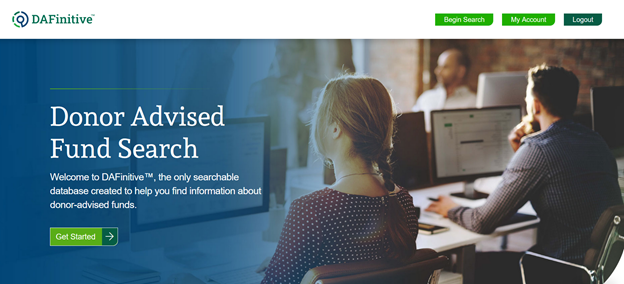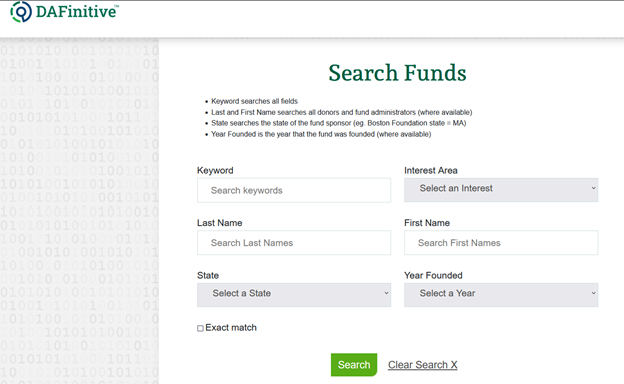It’s Research Pride Month, and boy oh boy do we have a celebration going on at the Helen Brown Group! If you have no interest in donor advised funds, you might want to skip today’s article and wait for next week.
But if you are, let me tell you what the party’s all about here at HBG:
A couple of years ago I got really frustrated by the lack of information about DAFs.*
It was a constant struggle for me and my team to find out:
- Who are the people with DAF accounts?
- When we’re researching a potential donor, how can we find out if they have a DAF so we can let our client know?
- Why isn’t it possible to find DAFs based on their philanthropic interests? Or their geography?
So a few members of the HBG team and I began building a database of donor advised funds to use as a lookup when we did research for our clients.
And it started to grow. And grow. Ten thousand funds. Twenty thousand funds. Forty thousand funds. Fif…holy cow!
About a year ago it dawned on me that this would be helpful to researchers everywhere. Not just us at HBG, but a research resource created by prospect researchers for prospect researchers. Or for anybody, really, who is interested in DAFs and their donors.
It’s finally here and we’re ready – and super excited – to show it off to you. It’s called DAFinitive™.
What can you do here? Well, check out the search page:
- The keyword box searches the entire database. That includes every field you see here as well as additional fields you don’t, like notes we might have found about the fund.
- Or, you can search by the last name and first name of a donor or fund administrator.
- Want to search for a list of DAFs in Florida that have an interest in animals? You can do that.
Is every DAF in DAFinitive™? Absolutely not, but we do have about 5% of the roughly one million DAFs estimated to be in existence, and we’re adding at least 1,000 funds every week.
We’re elbow-grease searching for those tough-to-find funds, too (you know the ones I mean…the ones held by sponsors that rhyme with Schwidelity and Billicon Salley that don’t list their funds anywhere aargh). Fair warning – if you’re thinking DAFinitive™ is going to solve your Fidelity-Charitable-is-a-black-box problem, I’m sorry, we’re not there yet. We do have a few of those funds – and growing, though.
That said, we’re happily crowdsourcing from everyone in the research community (hint hint!) who sends us a fund name and a URL to confirm it so if you want to see a fund in DAFinitive™, send it along!
Do we know how much is in each fund? No, but much to our surprise we did find a couple of sponsors that actually did list how much (or a range of how much) was in each fund account – that was a yahoo moment! And you might be as interested as we were to learn that the average fund size held in those commercial sponsors (like Fidelity and Schwab) is lower – by a lot – than in community or single-issue sponsors. (Check out the facts and figures below).
If you want to know more about DAFinitive™, there are lots more FAQs on the front page of the site (www.DAFinitive.com) – take a look to learn more.
Thanks for sharing my excitement! A heartfelt and massive thank you to the absolutely amazing beta testers who gave us honest and helpful feedback to bring DAFinitive™ to the launch pad.
Happy Research Pride Month!
*Not familiar with DAFs? Here’s a bit more information for you!
DAFs are philanthropic bank accounts that just about anyone can set up with one of the 976 sponsoring organizations in the US. Sponsors are regional community foundations, the nonprofit arm of a for-profit financial institution (also known as “commercial sponsors” or “national sponsors”) or a single-issue sponsor (like a university, religious-based community fund, etc.).
The donor gets a tax deduction when they deposit money into the account, and then they advise the sponsor to make donations from that account when they’re ready.
Lots of times information about those funds (and particularly about the donors) sits in a big black box. Many of the commercial DAF sponsors don’t publish anything about the funds they hold, and it’s hard for nonprofits to find out if someone has a DAF unless they make a gift. (And sometimes even then the nonprofit doesn’t find out who directed the gift if the sponsor doesn’t include that information with the donation!)
Want to know more about DAFs? Giving USA just released a fascinating report that is a must-read. Here are some key points from the report:
- Many DAF accounts have multiple donors or administrators that make gifts from the fund. Vanguard Charitable reported in 2016 that 61 percent of their funds had both male and female donor/administrators.
- DAFs provide much less of an administrative headache than setting up a personal or family foundation, and in recent years an increasing number of foundations have rolled their assets into DAFs.
Don’t miss the 2021 DAF Report, either, from the National Philanthropic Trust (NPT). 2021 marked their eleventh annual report about DAFs, and this edition holds some fascinating information. For example:
- “Grants from DAFs to qualified charities totaled an estimated $34.67 billion, representing a 27.0 percent increase compared to 2019 and a new high-water mark. This is the highest DAF grant increase in a decade.”
- In 2006 there were 160,000 donor advised funds in the United States with assets of about $31 billion. NPT reports that as of 2021 that number now stands at over 1 million funds with assets of nearly $160 billion. The majority of them are held with commercial sponsors (approximately 864,099), with another estimated 84,334 held at community foundations and 56,666 at single-issue charities.
- The average size of a DAF account across all sponsor types is $159,019 but that average varies quite a bit between them. The average amount in a commercial-sponsor DAF is $115,901; in a community foundation it’s $543,553, and in a single-issue sponsor is $244,238.


